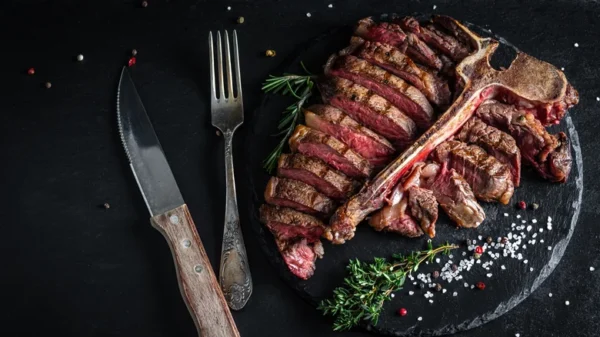The Legacy of Bistecca alla Fiorentina
The Renaissance was a transformative period known for its artistic and architectural achievements. Yet, amidst the masterpieces and cultural shifts, one gastronomic gem remains largely unrecognized: Bistecca alla Fiorentina. This iconic T-bone steak, enjoyed in Tuscany since the 16th century, is a testament to the enduring nature of culinary traditions.

Understanding the Origins
According to Tuscan historians, the word “bistecca” stems from the Italian adaptation of the English term “beef-steak.” This name emerged when English travelers, enamored by the local butcher’s skill, began enthusiastically chanting it in Florence. The T-bone steak, sourced from the short loin section of the Chianina breed, embodies the region’s rich culinary heritage. When cut across the bone, it beautifully combines both filet and sirloin strip, offering a symphony of textures and flavors that continue to delight steak enthusiasts today.
Cooking to Perfection
Cooking Bistecca alla Fiorentina requires a delicate balance of searing and maintaining a tender, rare interior, ideally in the 120-degree Fahrenheit range. For those preferring a less red steak, an internal temperature of 145 degrees is acceptable, though one side may cook more than the other due to the size of the T-bone. A thermometer placed close to the bone ensures an accurate reading, ensuring a perfect cook every time.
To recreate this Renaissance dish at home, pan-sear the steak over medium-high heat and finish it in the oven for the best results. Drizzling with extra virgin olive oil enhances its Italian roots. Serve it alongside grilled artichokes or an olive antipasto, honoring the noble tradition of Renaissance dining. For the adventurous, incorporating herbs or compound butters introduces modern twists to this age-old classic.
